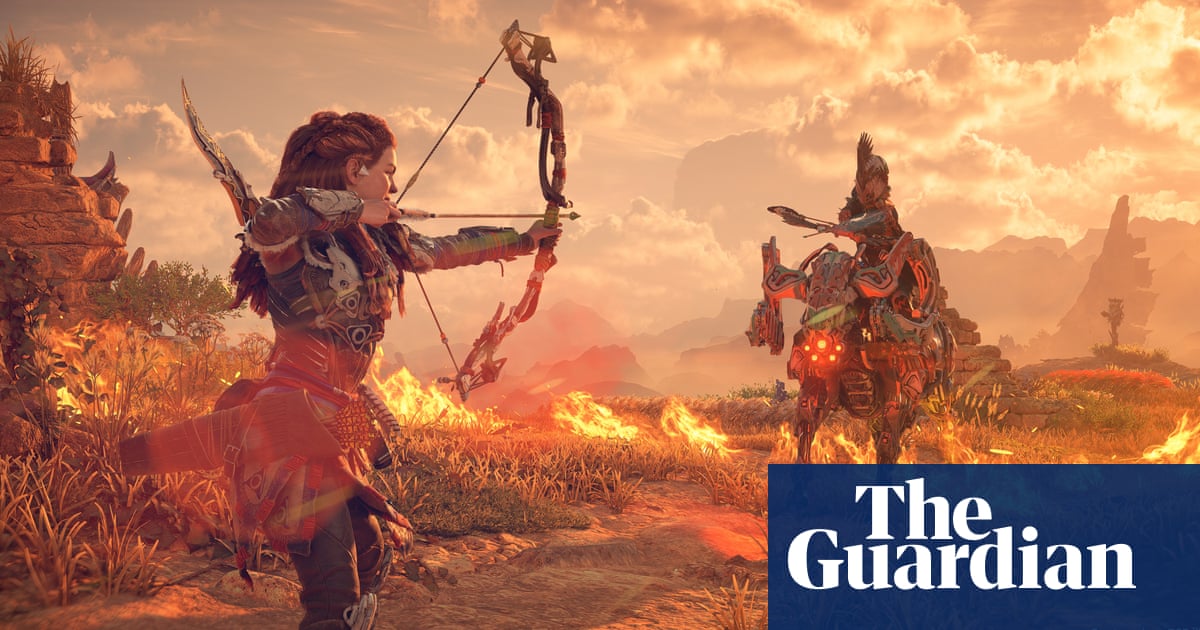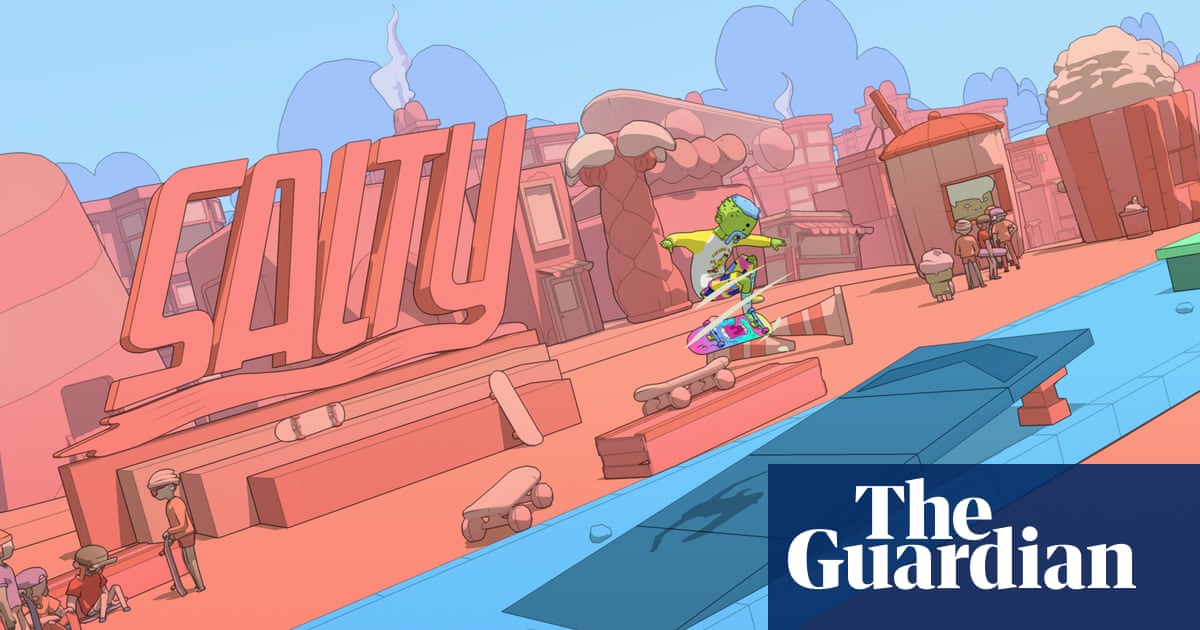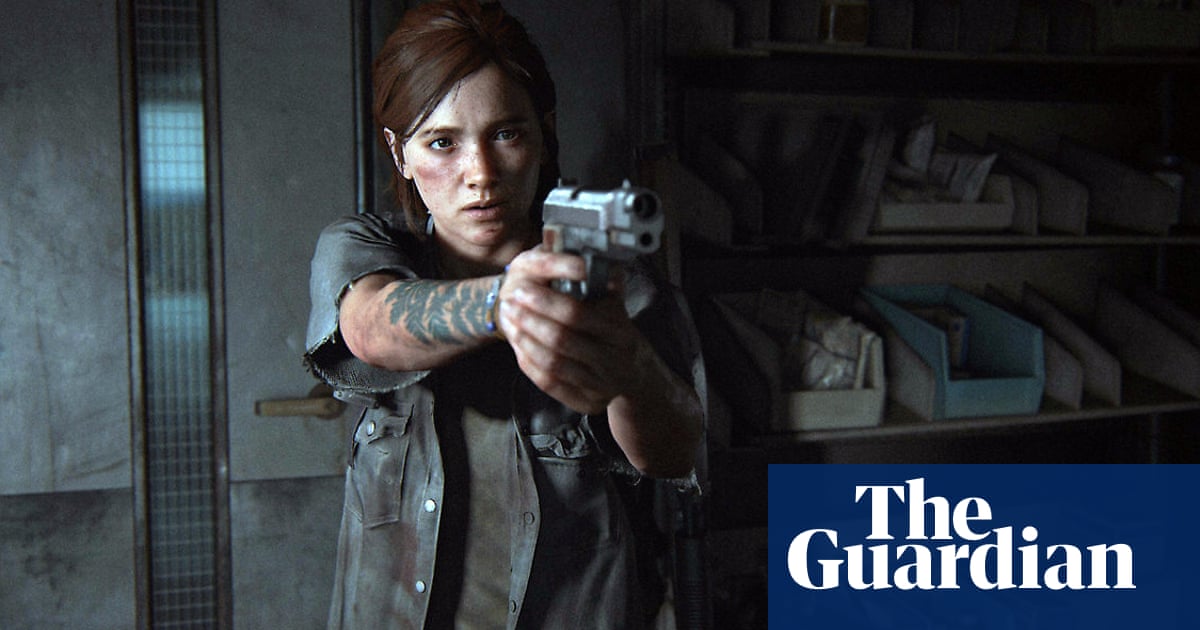
It is that time of year again, when every major video game publisher on the planet drops all its biggest releases within a few days of each other. Currently on the October release schedule: Assassin’s Creed Mirage, Detective Pikachu Returns, Forza Motorsport, Sonic Superstars, Marvel’s Spider-Man 2, Super Mario Bros Wonder … and November is looking just as busy. Many of us are still playing Starfield – what are we supposed to do now? Even though the way games are sold has fundamentally changed in the last five years, away from packing the shelves of high street stores and toward digital downloads, Christmas still provides a major boost to sales, and until that is transitioned into a holistic online platform, the seasonal rush will continue.
There is something intrinsically autumnal about video games. As the days get colder and the darkness draws nearer, we’re definitely in a familiar emotional and aesthetic realm. Consider the chilly gothic splendour of Elden Ring and Bloodborne, the stark killzones of Call of Duty, the spooky haunting grounds of Alan Wake, Silent Hill and Ghostwire: Tokyo. Folklore is rich with the monsters, demons and spooks that come out at this time of year as the fields lie fallow and the sun withdraws.
The Celtic festival of Samhain, the ancient forbearer of Halloween, was celebrated at this time of year when it was believed the barriers between earth and the spirit world were temporarily dissolved, allowing demons and fairies to stalk the forests. This concept of the dead and demonic intruding on Earth is a video game staple, from Ghosts ‘n Goblins to Doom Eternal and the monsters rendered into life by developers such as From Software, Bethesda and CD Projekt Red are heavily informed by folklore: the English goblins and boggarts, the Yuki-onna of Japanese ghost stories, the marauding demons of the Scandinavian wild hunts.
This is the season of vibrant reds, oranges and yellows, as the leaves turn, bonfires are lit, and the sun hangs low in the sky; and these colours are also plentiful in video games, thanks to the prodigious use of massive explosions. In recent years, we’ve seen developers keen to show off the graphical effect known as HDR, or high dynamic range lighting, in which the brightness and intensity of light is accurately modelled, and a natural way to do this is with a sun low in the sky, its beams flooding the world in honey-gold hues. Play Forza Horizon, Spider-Man, Zelda or Horizon Zero Dawn and it seems the world is caught in a perpetual autumn.
My favourite games are autumnal in mood and tone. They have that same sense of simultaneous beginning and ending, that same sparse crispness in the air, that same gentle, almost comforting melancholy. Think of Shadow of the Colossus, Journey or Night in the Woods – these are games rife with sadness and beauty. Even now, as an adult, games remind me of the school year beginning – those chilly walks home, kicking through dead leaves, breath hanging in the air. I was always desperate to put the day behind me and load something up on the Commodore 64.
Autumn and video games are also both places where death is encountered as a cyclical part of life. I can distinctly remember running off to play games when I found out my granddad had died. At the time, I felt guilty, but looking back, years later, I wonder if it was an attempt to cope with the finality of it all. This is the season of withdrawing, and that is what games are about too in a way. They sit us down and remind us that everything comes and goes, that everything is fleeting. Sometimes that’s a difficult lesson to learn. Games, like autumn, teach it well.
What to play
As I’m clearly in a reflective mood, I’m going to recommend Train Sim World 4 this week. It’s the latest in a long line of transport simulations from Dovetail Games, giving you control of various modern and historic trains as you drive around the rail network, mastering the controls, observing signals and enjoying the countryside along routes in the UK, Europe and the USA. It’s such a serene, low-stakes game, crammed with reassuring detail – a relaxing way to see the world, and ride the Flying Scotsman, without actually moving from your sofa.
Available on: PC, PlayStation, Xbox
Playtime: Limitless
What to read
It’s been a depressing week in the video game industry. Fortnite publisher Epic Games announced that it would be making 830 workers redundant, with CEO Tim Sweeney telling staff, “For a while now, we’ve been spending way more money than we earn.” The company’s execs had plans to pivot Fortnite into a metaverse eco-system, a move which has been more costly than expected. Also, Creative Assembly’s online shooter Hyenas was canned before launch and layoffs are expected. Considering this is a $200bn industry, questions have got to be asked about team management because “sorry, we tried to expand too fast and it didn’t work so byeeeee” is not good enough.
The Art Newspaper has an interesting piece on how video games can become places of remembrance, highlighting Fortnite’s Voices of the Forgotten museum. We’ve seen memorial events in many online games over the past two decades, especially World of Warcraft.
In a similar vein, Eurogamer has a great interview feature with the makers of Sea of Stars about how music is used as a nostalgic device in the game.
What to click
‘I can’t kill a wolf but will happily watch a Sim drown’: murder and morality in video games
This golf sim is the best video game ever – I just need to figure out why
EA Sports FC 24 review – new name, same ridiculously fun football sim
What would happen if Russia invaded Finland? I went to a giant war game in London to find out
Question Block
This one came in from ZeroChan on Twitter/X, who asked:
“Why is left to right scrolling in 2D games the default?”
I used to think this was something to do with the fact that we read from left to right, but then, of course, I discovered this is a cultural faux pas – many languages are read the other way.
But there is actually a scientific answer to this … kind of. In 2015, Professor Peter Walker at Lancaster University published research which argued that the human brain has a built-in left to right bias when it comes to the perception and depiction of movement. He studied thousands of images on Google showing objects or people in motion and found that a majority were shown moving left to right. He also found that in typography, italics used to convey speed or motion, always appear to be moving from – yes – left to right.
However, his report, which was published in the journal Perception, doesn’t seem to explain why the brain has this bias, instead advising further research. Maybe someone wants to take that on and report back?
If you’ve got a question for Question Block – or anything else to say about the newsletter – hit reply or email us on pushingbuttons@theguardian.com












